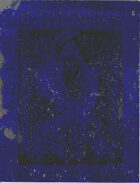

Obviously, the number of signals required to reach a large number of PHY chips quickly becomes unmanageable, thus RMII was developed to reduce the total number of signals by a factor of 2.
#AKASHIC BROTHERHOOD VS SOCIETY OF ETHER MAC#
In a multi-port device, two signals from the MAC can be shared among multiple PHY chips, while another 16 signals (MII routing) or 6-7 signals (RMII routing) are required per PHY chip. The primary difference between these two routing standards is the number of signals required to interface between the MAC and each PHY chip. Routing between the MAC and PHY follows either the MII or RMII routing standards with point-to-point topology. Normally dog bone fanout is fine the pitch on these components is not super-fine and you'll be able to reach the first two rows of balls on the surface layer (see above). If you're designing a network switch with high port count, the controller ICs may have a BGA footprint, so you'll need an escape routing scheme. Normally, microstrips are used on the surface layer, but striplines can also be used. Next we need to consider routing between different chips in the system, and to the connectors. All routes within this scheme should be placed on a single layer with precise length matching. Routing uses 50/100 Ohm single/differential impedance, requiring impedance controlled routing over a ground plane.

The standard routing protocols for Ethernet (MII and RMII) are compatible with 10Base-T and 100Base-TX, although similar routing standards are designed for 1 Gbps and higher data rates (GMII, RGMII, SGMII, QSGMII, I cover these in the article linked above). If you have an MCU that supports USB but not Ethernet, there are USB to Ethernet data converters that will let you route to an Ethernet port. MCUs that support Ethernet (e.g., Microchip's PIC32 MCUs) will include an integrated MAC/PHY transceiver on the die, giving you a small footprint option. If you're routing an Ethernet port to a processor, you generally won't have dedicated PHY chips or controllers. If you're using this system layout, pay attention to the required MII routing standard between the main controller and the expansion PHY. The expansion PHY chip connects to one of the port outputs using an MII routing standard, and this chip provides the additional ports needed to increase the total port count of the switch. This type of switch controller will typically support about 16 ports. This high port count switch uses a main controller ICM that includes the MAC and integrated PHY layer. The image below shows an example portion of a layout for an Ethernet switch. Take a look at this article to see more guidelines on the various MII standards. However, these other standards, particularly GMII/RGMII, use 125 MHz clock. In the last point, I've only mentioned MII and RMII, but there are other MII standards that are used in Ethernet routing with that have similar requirements. In RMII, a 50 MHz clock is used for both data rates. In MII, a 2.5 MHz clock is used for 10 Mbps data rates, while a 25 MHz clock is used for 100 Mbps. Clock: The final important element is a clock that is used to trigger signal transmit and receive functions between the MAC and the PHY.If a switch controller only includes limited PHY space for a specific port count, the port count can be expanded with a dedicated PHY chip. Again, this could be integrated into the switch controller. Physical layer (PHY): The next stage in Ethernet layout routing is the PHY. This is typically an integrated circuit that converts the digital data from the MAC into analog signals for transmission down copper or optical fiber.The MAC provides control over determining destination addressing, sends along its own address to receive data, and duplexes and assembles data into packets for transmission to another device. For high port count switches there are dedicated controller ICs for this function. Medium access control (MAC): The MAC is typically integrated into the processor of the device (FPGA, ASIC, MCU, or other component), or it may be present as a standalone controller.Within the IEEE 802 standards, Ethernet devices contain three primary elements, all of which must be routed together in a specific manner: High-level Ethernet Layout, Routing, and Architecture

The overall architecture for creating Ethernet-capable devices is deceptively simple, but certain rules should be followed to ensure signal integrity. Thankfully, Ethernet routing standards make it easy for designers to create everything from complex networking equipment to single-board computers for any application. Ethernet over copper is likely part of the backbone of your office building’s networking infrastructure.


 0 kommentar(er)
0 kommentar(er)
